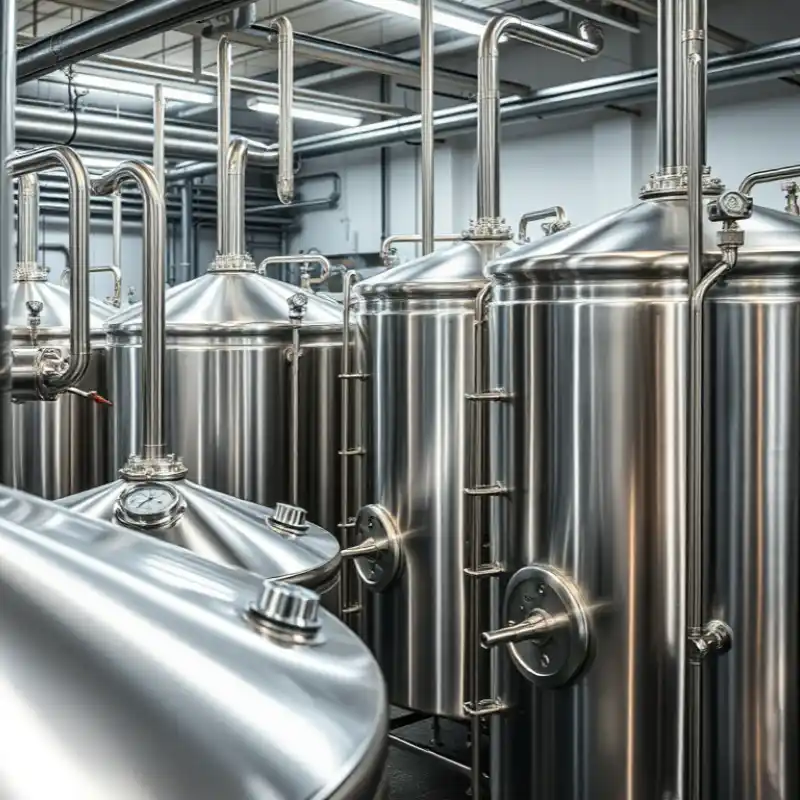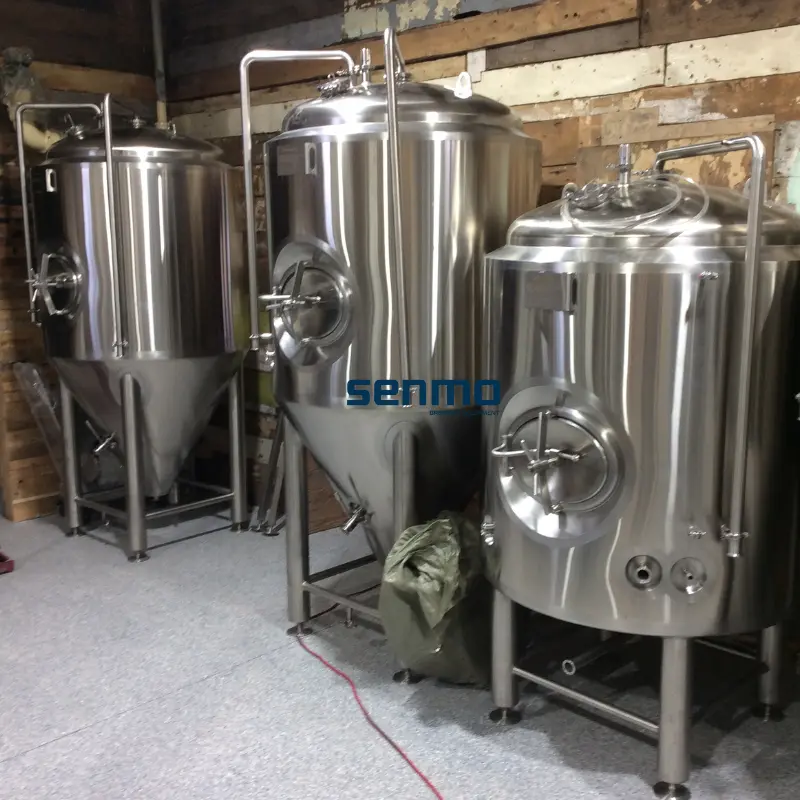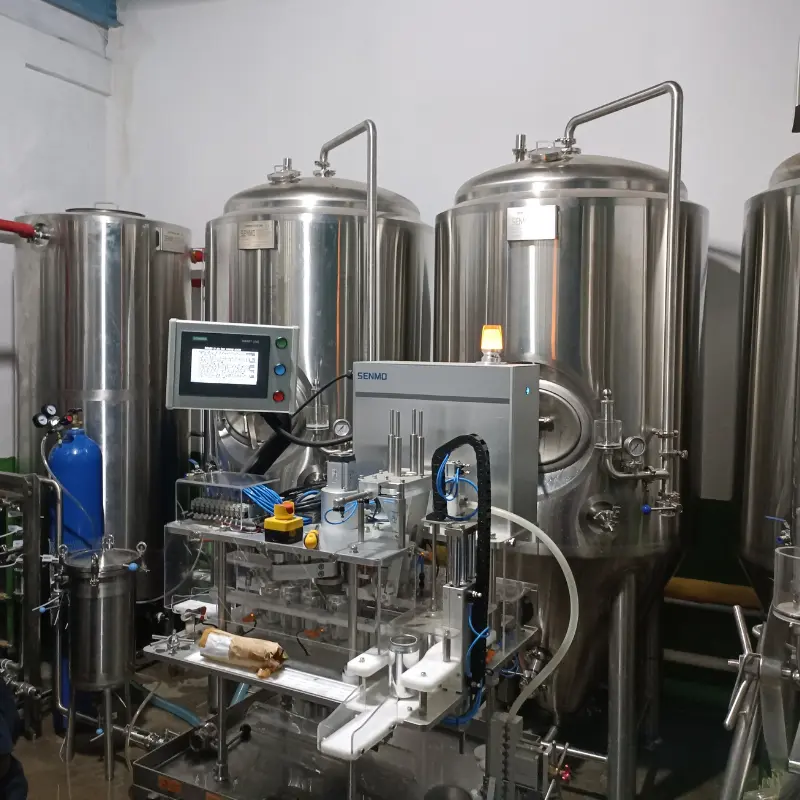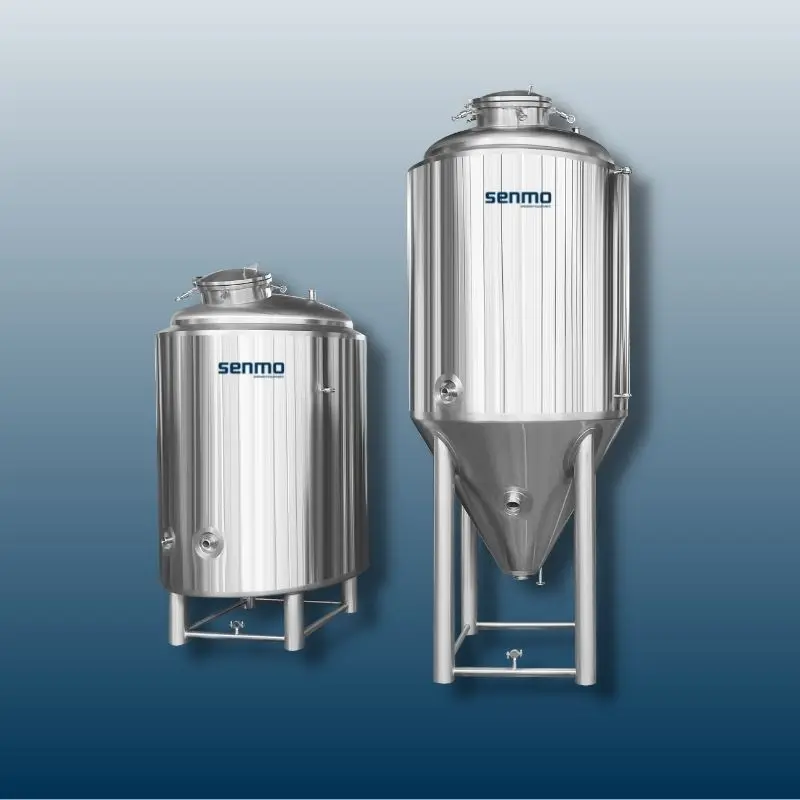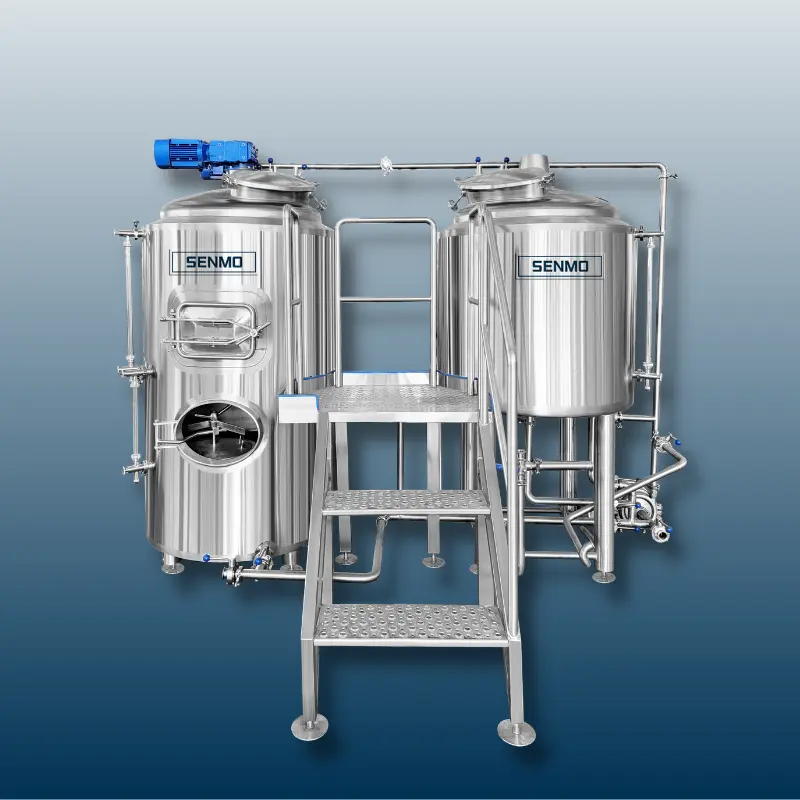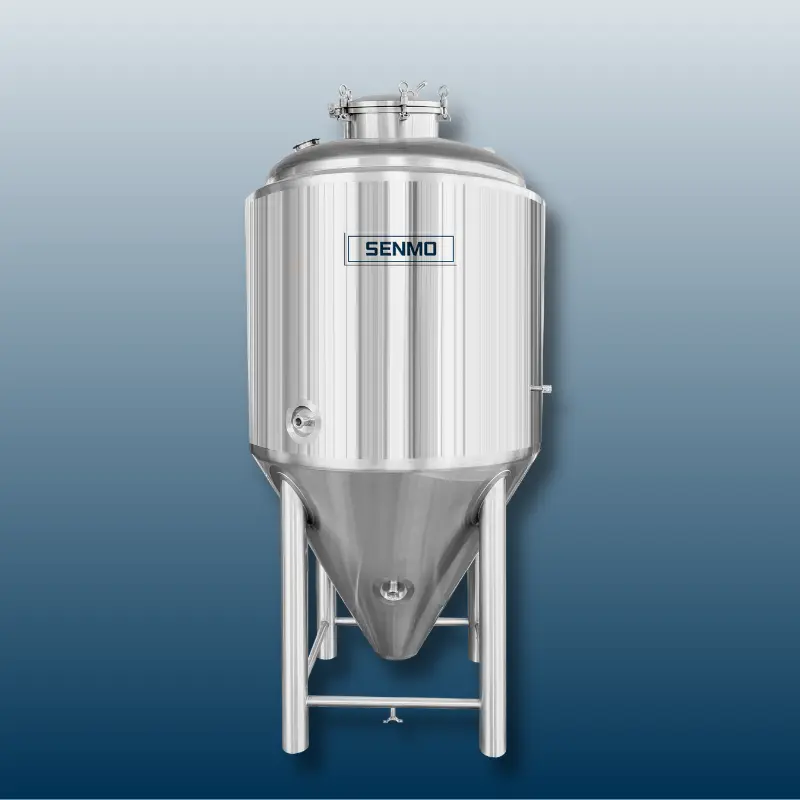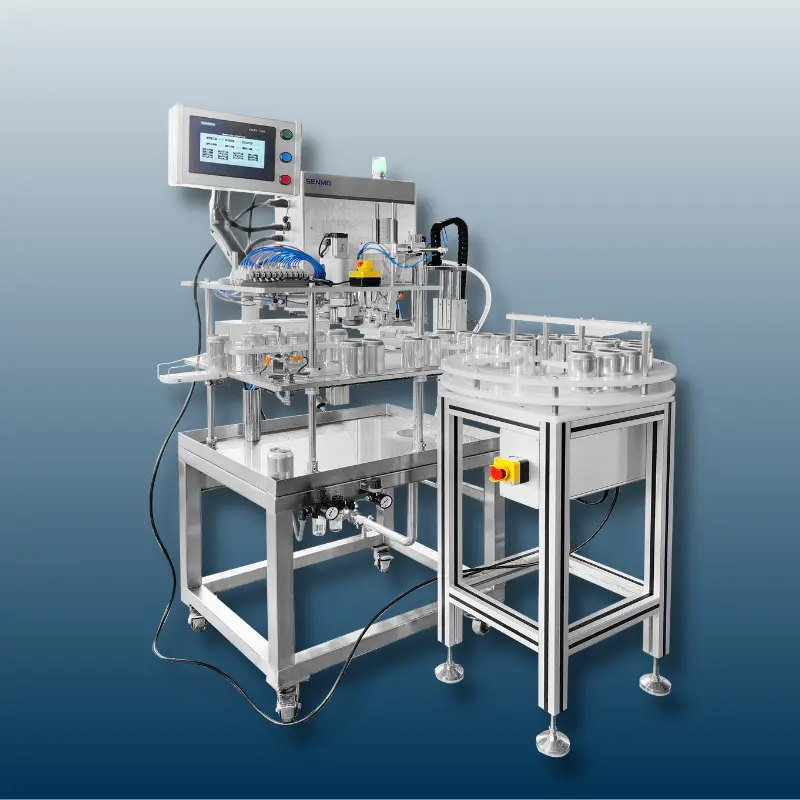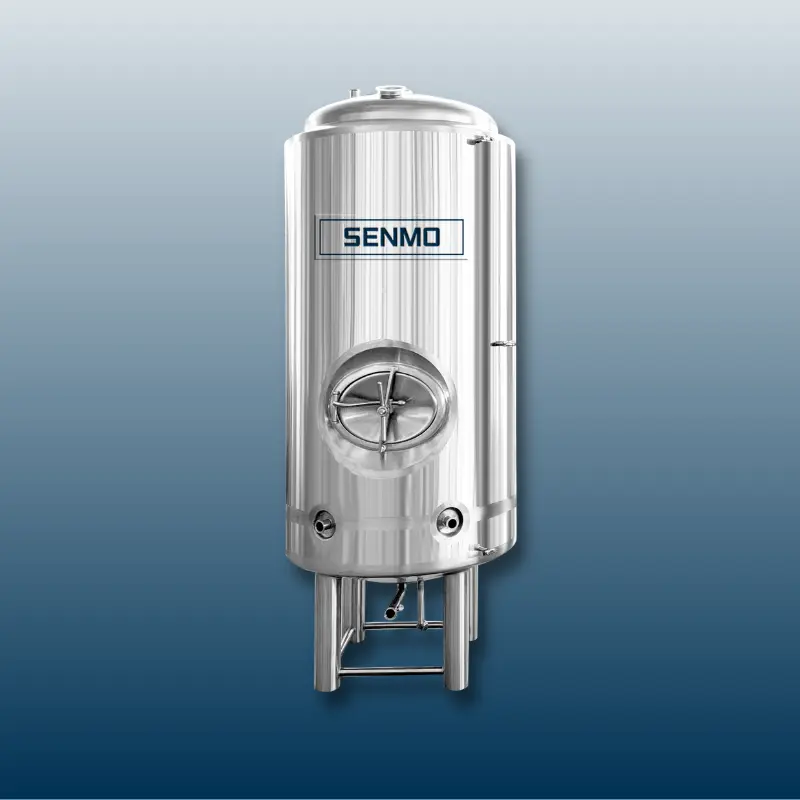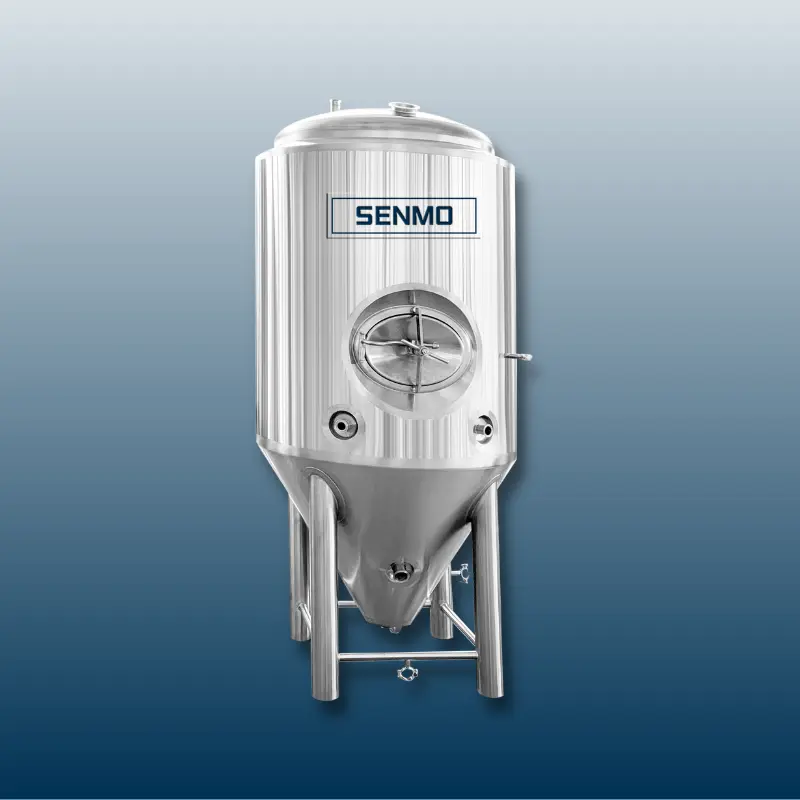1. Material Grade and Quality
The grade of stainless steel used in fermentation tanks directly impacts their durability and resistance to corrosion. The most common grades are:
304 Stainless Steel: Ideal for general-purpose fermentation, offering excellent corrosion resistance and affordability.
316 Stainless Steel: Contains molybdenum, making it more resistant to harsh chemicals and acidic environments. Suitable for high-precision industries like pharmaceuticals.
316L Stainless Steel: A low-carbon variant of 316, ideal for welding and high-temperature applications.
Example: A craft brewery producing beer with a pH of 4.5 might opt for 304 stainless steel, while a pharmaceutical company fermenting acidic compounds might require 316L for enhanced durability.
2. Tank Capacity and Dimensions
The size of the tank should align with your production needs. Overestimating capacity can lead to unnecessary costs, while underestimating can hinder scalability.
| Tank Capacity (Gallons) | Recommended Use Case | Example Industry |
|---|---|---|
| 50-500 | Small-scale craft brewing or winemaking | Microbreweries |
| 500-5,000 | Medium-scale production | Regional breweries |
| 5,000+ | Large-scale industrial fermentation | Commercial distilleries |
Example: A small winery producing 10,000 bottles annually might choose a 1,000-gallon tank, while a large-scale brewery might require multiple 10,000-gallon tanks.
3. Temperature Control Systems
Fermentation is highly temperature-sensitive. Tanks with built-in cooling jackets or external temperature control systems are crucial for maintaining consistent fermentation conditions.
Cooling Jackets: Integrated into the tank walls, they circulate coolant to regulate temperature.
External Heat Exchangers: Used for larger tanks or specific temperature requirements.
Example: A lager brewery must maintain temperatures between 45-55°F (7-13°C), necessitating a robust cooling system.
4. Hygiene and Cleanability
Stainless steel is inherently hygienic, but design features like smooth welds, sanitary fittings, and CIP (Clean-in-Place) systems enhance cleanability.
Smooth Welds: Prevent bacterial buildup.
Sanitary Fittings: Ensure easy disassembly and cleaning.
CIP Systems: Automate cleaning, reducing downtime and labor costs.
Example: A dairy fermentation facility producing yogurt must prioritize tanks with CIP systems to meet strict hygiene standards.
5. Pressure and Vacuum Ratings
Fermentation can produce gases, creating pressure inside the tank. Ensure the tank is rated for the expected pressure levels.
Pressure Ratings: Typically range from 0-15 PSI for most fermentation processes.
Vacuum Ratings: Important for processes requiring oxygen exclusion.
Example: A kombucha producer might require a tank with a pressure relief valve to handle carbon dioxide buildup.
6. Ports and Accessories
The number and type of ports (e.g., for sampling, draining, or adding ingredients) should match your operational needs.
Sample Ports: Allow for quality control during fermentation.
Racking Arms: Facilitate the transfer of liquids without disturbing sediments.
Sight Glasses: Enable visual monitoring of the fermentation process.
Example: A craft brewery might prioritize tanks with multiple sample ports to monitor alcohol content and flavor development.
7. Mobility and Installation
Consider whether the tank needs to be stationary or mobile. Smaller tanks often come with wheels or stands for easy movement.
Stationary Tanks: Ideal for large-scale production.
Mobile Tanks: Suitable for small-batch or experimental fermentation.
Example: A small distillery experimenting with different recipes might prefer mobile tanks for flexibility.
8. Cost and ROI
While stainless steel tanks are a significant investment, their durability and low maintenance costs often justify the expense. Consider the total cost of ownership, including installation, maintenance, and energy usage.
| Feature | Initial Cost | Long-Term ROI |
|---|---|---|
| 304 Stainless Steel | Lower | Moderate |
| 316L Stainless Steel | Higher | High (for harsh environments) |
| CIP System | Higher | High (reduced labor costs) |
Example: A winery investing in 316L tanks with CIP systems may see a higher upfront cost but will benefit from reduced maintenance and longer tank life.
9. Compliance with Industry Standards
Ensure the tank meets industry-specific regulations, such as FDA, USDA, or EU standards for food and beverage production.
Example: A pharmaceutical company must ensure tanks comply with GMP (Good Manufacturing Practices) guidelines.
10. Customization Options
Many manufacturers offer customizable features, such as additional ports, specialized coatings, or unique shapes.
Example: A brewery producing unique beer styles might opt for custom-designed tanks to accommodate specific fermentation techniques.
Data Table: Comparison of Stainless Steel Fermentation Tanks
| Feature | Tank A | Tank B | Tank C |
|---|---|---|---|
| Material Grade | 304 | 316L | 304 |
| Capacity (Gallons) | 1,000 | 5,000 | 500 |
| Cooling System | Jacketed | External | Jacketed |
| CIP System | Yes | Yes | No |
| Pressure Rating (PSI) | 10 | 15 | 5 |
| Ports | 4 | 6 | 3 |
| Cost | $10,000 | $50,000 | $5,000 |
| Best Use Case | Craft Brewery | Distillery | Experimental |
Conclusion
Choosing the right stainless steel fermentation tank involves evaluating factors such as material grade, capacity, temperature control, hygiene, and cost. By understanding your specific needs and comparing options, you can invest in a tank that enhances your production efficiency and product quality. Whether you're a small craft brewery or a large-scale pharmaceutical company, the right fermentation tank is a cornerstone of successful fermentation processes.
By carefully considering these features and leveraging the data provided, you can make an informed decision that aligns with your operational goals and budget.
Premium Stainless Steel Fermentation Tanks – Your Trusted Partner in Fermentation Solutions
At Senmo, we specialize in the production and export of high-quality stainless steel fermentation tanks, designed to meet the diverse needs of industries such as brewing, winemaking, dairy, and biotechnology. Located in Jinan City, the heart of China’s beer equipment industry, we pride ourselves on our state-of-the-art manufacturing facilities, a skilled workforce of over 80 production employees, and a dedicated team of more than 20 sales and after-sales service professionals. With years of experience and a focus on innovation, we offer a wide range of fermentation tanks in various sizes and configurations, tailored to your specific requirements.
Our products are crafted from premium-grade stainless steel, ensuring durability, hygiene, and superior performance. Whether you're a small craft brewery or a large-scale industrial producer, we provide reliable solutions, comprehensive after-sales support, and competitive pricing. Senmo has established long-term partnerships with clients worldwide, exporting to over 20 countries and regions across Europe, America, Australia, and Asia. Partner with us to elevate your fermentation processes and achieve outstanding results. Contact us to learn more or place your order – we look forward to serving you!
